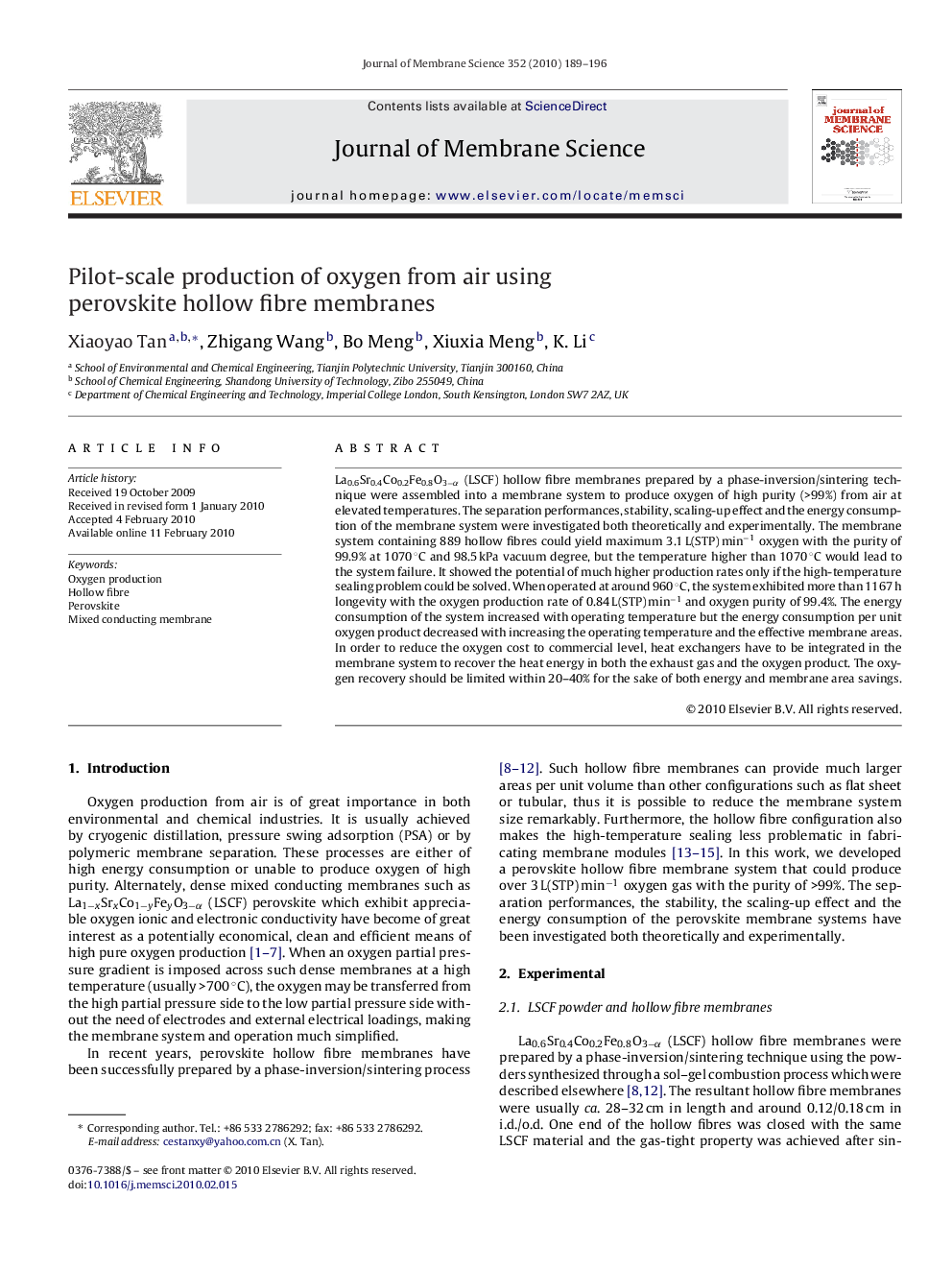| Article ID | Journal | Published Year | Pages | File Type |
|---|---|---|---|---|
| 636561 | Journal of Membrane Science | 2010 | 8 Pages |
La0.6Sr0.4Co0.2Fe0.8O3−α (LSCF) hollow fibre membranes prepared by a phase-inversion/sintering technique were assembled into a membrane system to produce oxygen of high purity (>99%) from air at elevated temperatures. The separation performances, stability, scaling-up effect and the energy consumption of the membrane system were investigated both theoretically and experimentally. The membrane system containing 889 hollow fibres could yield maximum 3.1 L(STP) min−1 oxygen with the purity of 99.9% at 1070 °C and 98.5 kPa vacuum degree, but the temperature higher than 1070 °C would lead to the system failure. It showed the potential of much higher production rates only if the high-temperature sealing problem could be solved. When operated at around 960 °C, the system exhibited more than 1167 h longevity with the oxygen production rate of 0.84 L(STP) min−1 and oxygen purity of 99.4%. The energy consumption of the system increased with operating temperature but the energy consumption per unit oxygen product decreased with increasing the operating temperature and the effective membrane areas. In order to reduce the oxygen cost to commercial level, heat exchangers have to be integrated in the membrane system to recover the heat energy in both the exhaust gas and the oxygen product. The oxygen recovery should be limited within 20–40% for the sake of both energy and membrane area savings.
